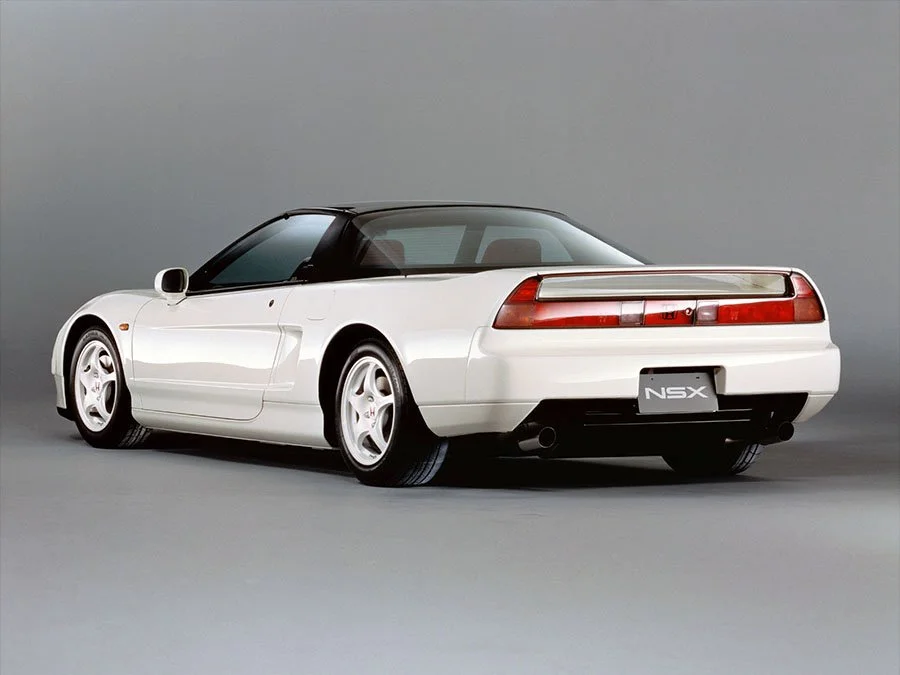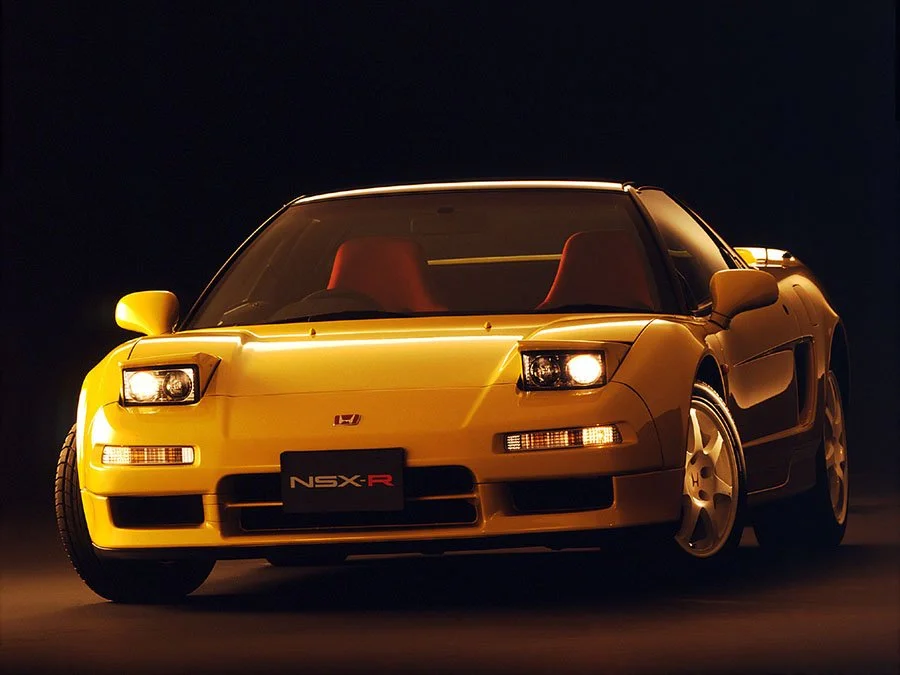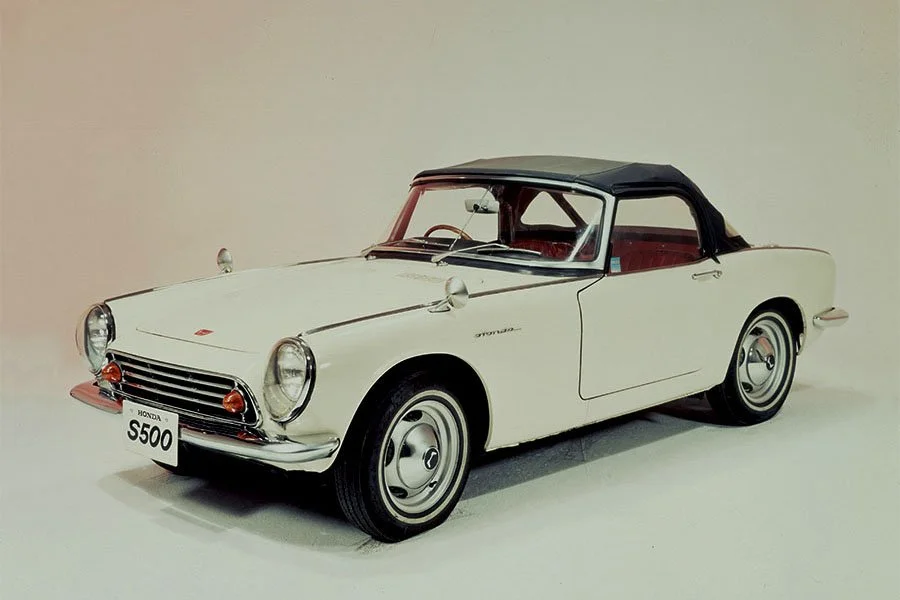Guide: Origin R - a Historical & Technical Appraisal of the Honda NSX 3.0 Type R
/BACKGROUND
Upon its release, Honda’s groundbreaking NSX was widely considered the finest mid-range supercar available. With its innovative all-aluminium construction, high output naturally aspirated V6, superb handling dynamics, unmatched ergonomics, class-leading build quality and day-to-day practicality, this Japanese imposter re-wrote the rulebook in terms of what could be expected.
Famously, the NSX outclassed its rivals from Porsche (964 type 911) and Ferrari (348) in almost every department. Objectively, it only lost out on badge appeal and the 348’s handsome looks.
However, the NSX’s easygoing nature and compliant set-up left some customers yearning for more.
What they wanted was a hard core, driver-focused version that could exploit the model’s basic DNA and take the NSX concept closer to the limit of its capability. Something more in the mould of Porsche’s fabled early 1970s 911 Carrera RS was sought: a stripped-out high performance lightweight designed for on-track effectiveness rather than comfortable city driving.
The clamour for a factory NSX hot rod came mostly from Honda’s loyal customers in Japan.
Obligingly, the firm created a new performance line: Type R.
Later years would see other Honda models undergo the Type R treatment to include the Integra, Civic and Accord which, like this hot new NSX, were initially sold exclusively into the Japanese Domestic Market (JDM).
When the NSX Type R was given the green light, Porsche were known to have a Carrera RS version of their latest 911 in development – the first in almost 20 years.
Spurred on by the fact, Honda had every intention of retaining their advantage with the Type R.
After an intensive development programme, the NSX Type R was launched at the Tokyo Motor Show in October 1992.
Production began in November.
CHASSIS
Honda’s pioneering all-aluminium unibody chassis remained largely intact in the transition to Type R trim. Minor alterations designed to reduce oversteer and increase rigidity saw new brackets added underneath the battery tray and ahead of the radiator.
The existing double wishbone suspension arrangement with its forged control arms was modified to become more track-oriented. Anti-roll bars, bushes, coil springs and dampers were all stiffened up to give additional rear-end grip and reduce the original car’s spring bias.
As before, braking was via an independent four-channel ABS system with 282mm ventilated discs all round.
Instead of the existing five-spoke alloy wheels, Honda equipped the Type R with lightweight forged items supplied by Enkei. Wheel size remain unchanged; 15 x 6.5-inches at the front and 16 x 8-inches at the rear shod with 205/50 ZR 15 and 225/50 ZR 16 tyres respectively.
A standard 70-litre fuel tank mounted behind the front axle was carried over without modification.
ENGINE / TRANSMISSION
In addition to its novel chassis technology, one of the NSX’s most impressive attributes had been its normally aspirated three-litre all-alloy dual overhead cam 90° V6 which bristled with state-of-the-art features.
Chief among these was Honda’s VTEC variable valve timing system that hydraulically switched the cam profile at a fixed point in the rev-range to optimise performance, fuel economy and emissions.
Honda also fitted class-leading PGM-F1 electronic fuel-injection.
Other aspects of the specification included four valve cylinder heads, wet-sump lubrication and a 10.2:1 compression ratio. Displacement was 2977cc thanks to a bore and stroke of 90mm and 78mm.
Engines fitted to Type R variants were blueprinted and equipped with a balanced crankshaft.
Peak output was officially unchanged with 270bhp at 7100rpm and 210lb-ft at 6500rpm. However, this was a ruse so that Honda could avoid having to re-apply for type approval. The true power output was reputedly closer to 290bhp.
The Type R’s five-speed manual gearbox was given a higher final drive ratio (4.235:1 instead of 4.06:1). The change resulted in faster gear shifts and improved acceleration at the expense of a little top speed.
A higher locking limited-slip differential was also fitted.
BODYWORK
Styling-wise the original NSX had received considerable praise for its elegant design, neatly integrated aero kit and glassy cockpit that provided excellent all-round visibility.
Surprisingly, aside from the aforementioned set of Enkei wheels, there was little to differentiate the Type R from a base NSX.
Wire mesh was used for the side intakes and in each corner of the nose where the discarded fog lights originally resided.
A red-backed Honda nose badge was fitted along with an individually numbered plaque on the door sill.
Otherwise, there were no other tell-tale signs that this was the most extreme NSX available.
As usual, body panels were fashioned from lightweight aluminium.
INTERIOR
As the standard NSX was conceived to strike a balance between performance, luxury and daily driveability, it was the creature comforts that were first to go in the transition to Type R trim.
A major weight reduction programme saw the sound deadening, power steering, audio system, spare tyre, air-conditioning, traction control and some of the other electrical equipment removed.
The plush electric seats from the existing variant were replaced with lightweight carbon-kevlar buckets made by Recaro. These were upholstered in alcantara suede (as opposed to leather) and retained electric fore-aft adjustment.
Alcantara suede was also used for the dash and door panels along with contrast stitching.
A titanium shift knob was fitted and electric windows were kept for reasons of practicality.
The standard steering wheel was replaced with a three-spoke non-airbag Momo item.
WEIGHT / PERFORMANCE
Thanks to the litany of weight saving measures carried out, the NSX Type R tipped the scales at 1230kg which represented a 140kg reduction compared to Honda’s standard variant.
Because of its higher final drive ratio, top speed dropped from 168mph to 163mph. The upshot was the 0-62mph time dropped from 5.5 to 5 seconds flat.
OPTIONS
Customers could re-instate various comfort equipment to include air-conditioning and a stereo.
Also available was a carbonfibre interior trim package that comprised instrument fascia, centre console and door panel inserts.
Wheels painted Championship White was another option.
PRODUCTION CHANGES
In 1994, the new seven spoke wheels fitted to the rest of the NSX range arrived. These measured 16 x 7-inches at the front (up from 15 x 6.5) and 17 x 8.5-inches at the rear (up from 16 x 8). The gear cut method was also changed to reduce noise.
Upgrades made in 1995 included a lower second gear ratio and the addition of a Torque Reactive limited-slip differential.
END OF PRODUCTION
The NSX Type R was discontinued in September 1995.
By this time, 483 units had been built, all of which were right-hand drive and destined for the Japanese Domestic Market.
Although hardly a massive commercial success, this critically acclaimed first iteration of the Type R theme spawned a number of spin-off models that continue to this day.
A second series NSX Type R with the later 3.2-litre engine and face-lifted bodywork arrived in May 2002.
Text copyright: Supercar Nostalgia
Photo copyright: Honda - https://global.honda/








































